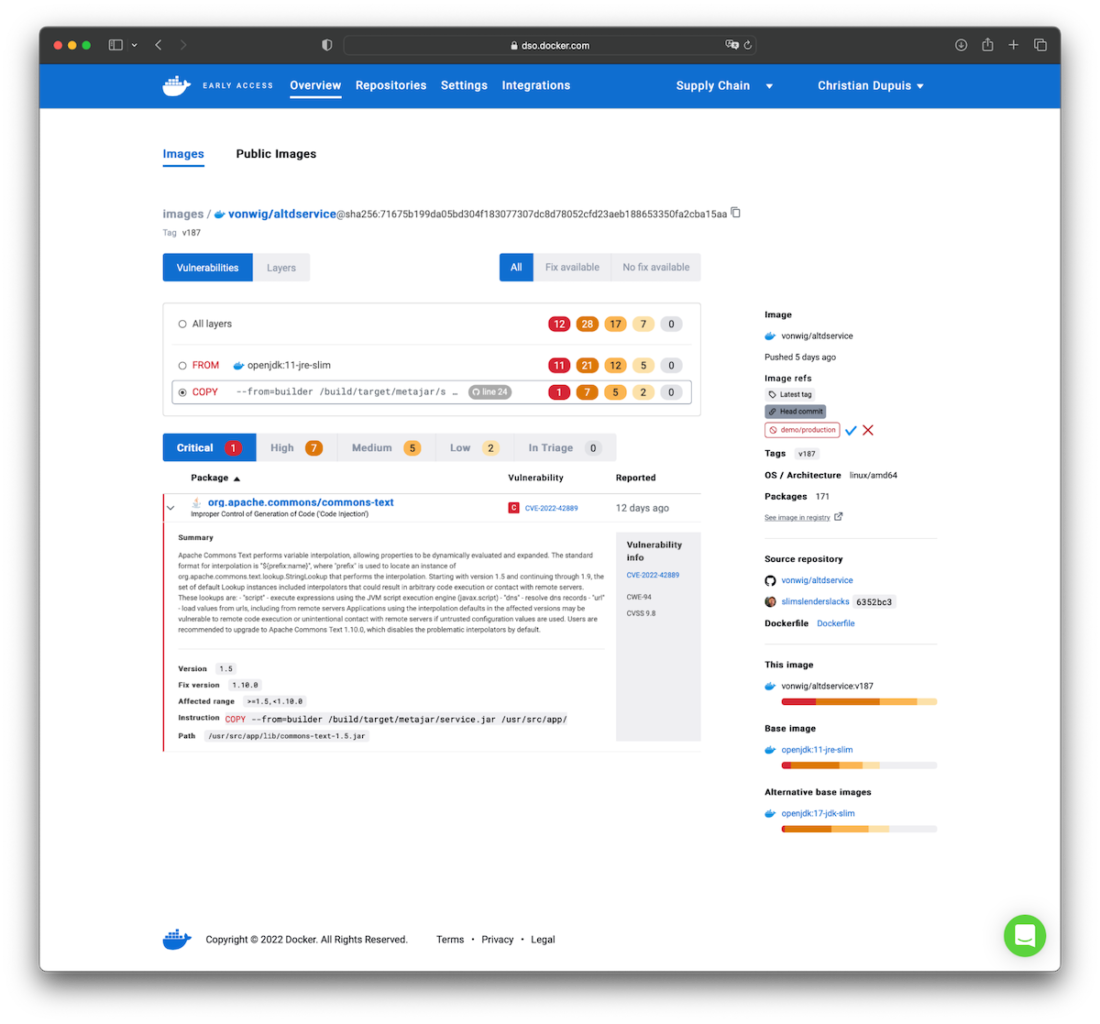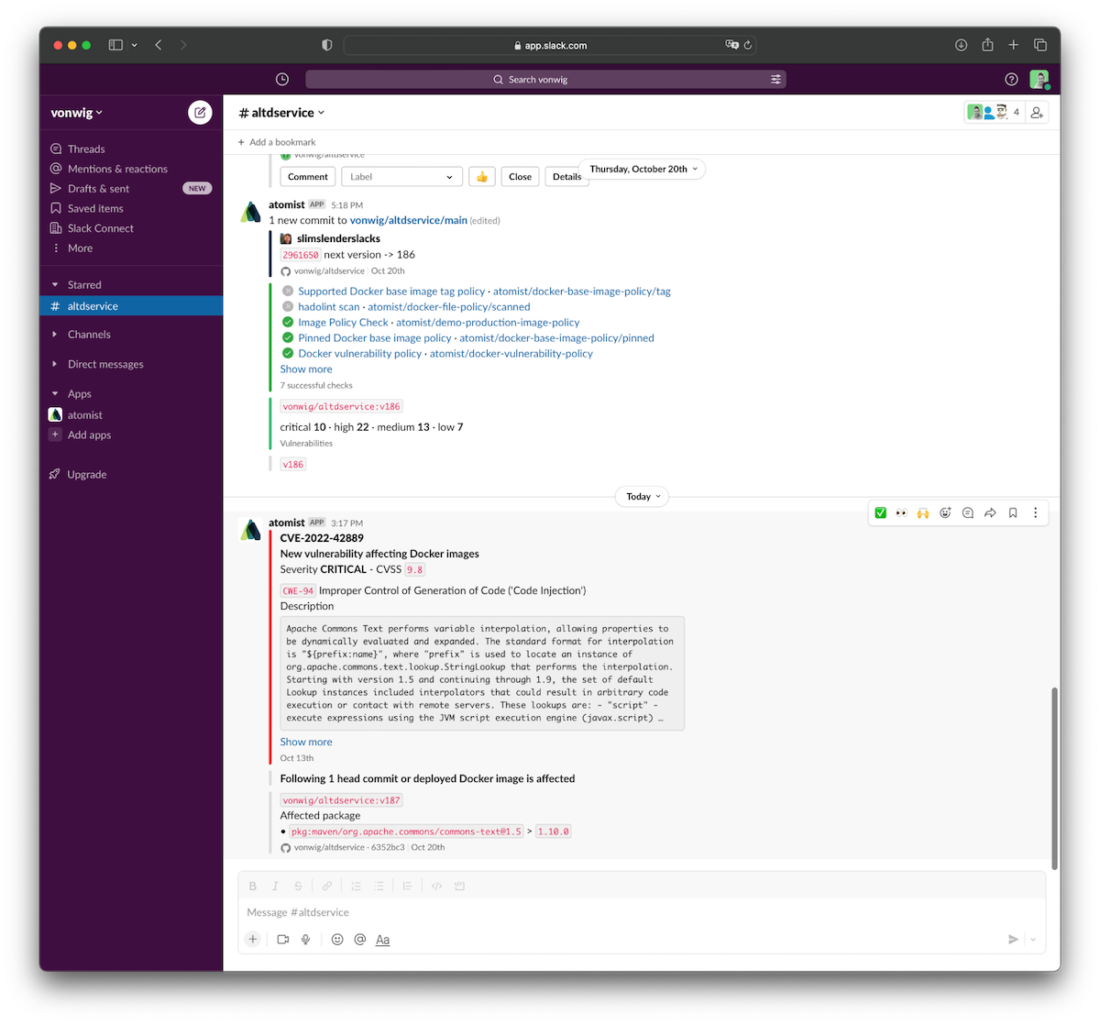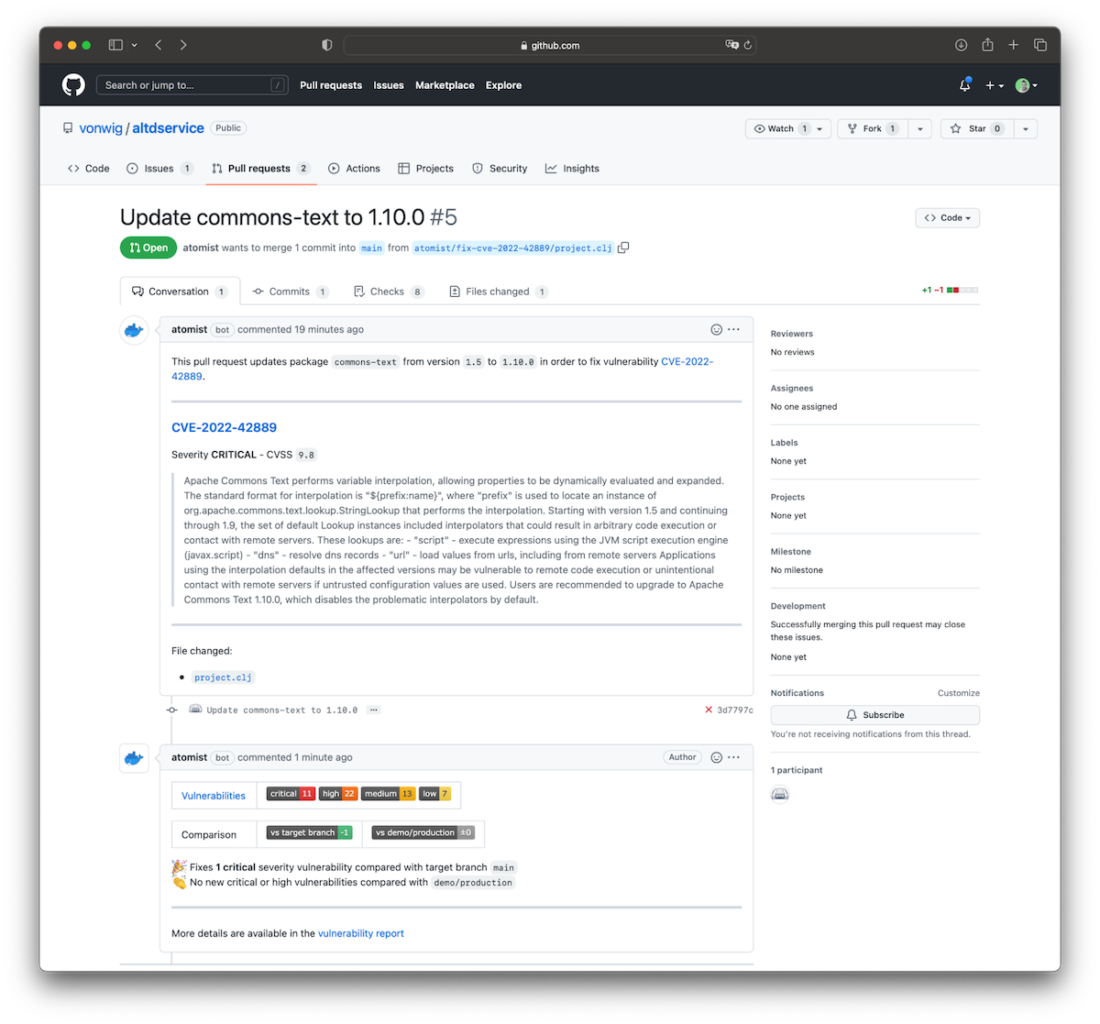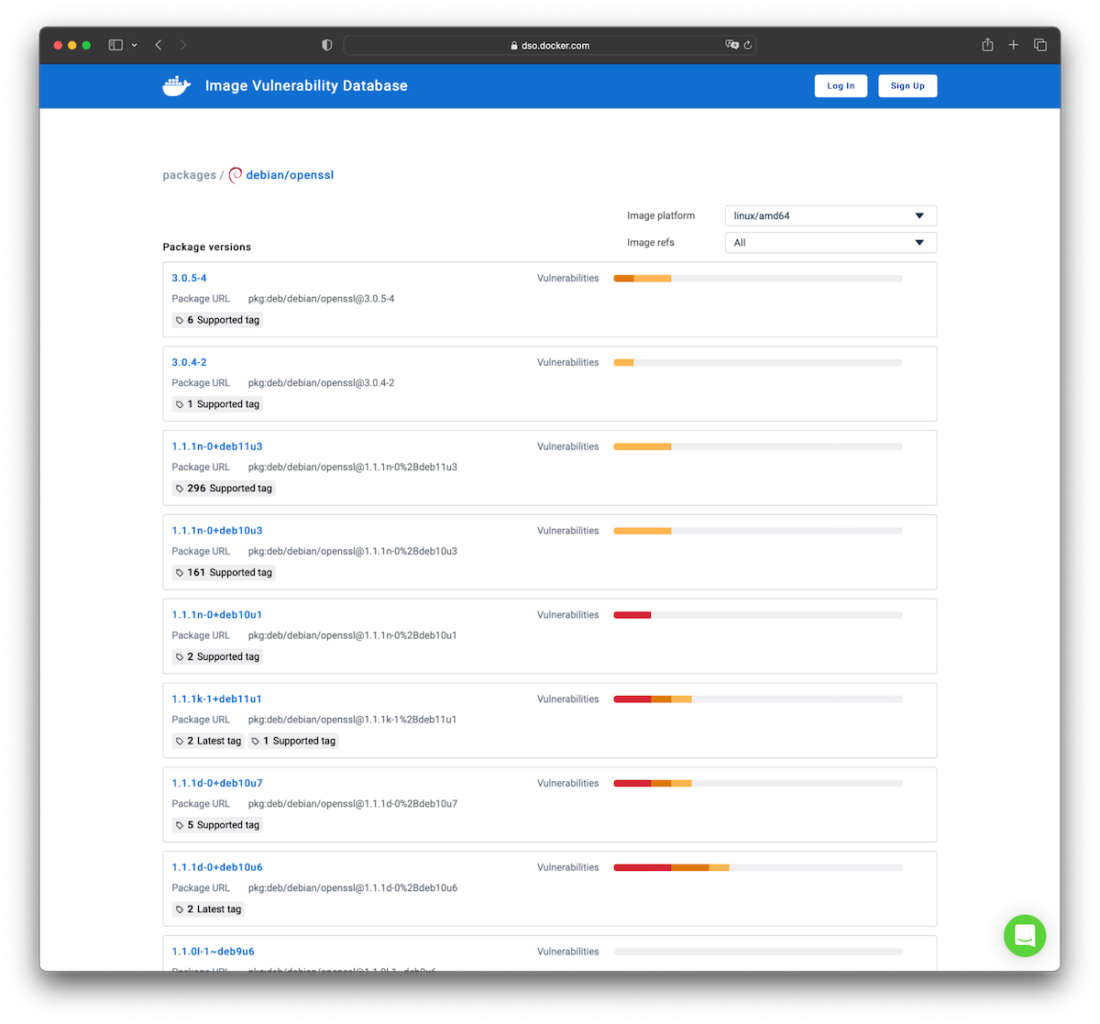OpenSSL 3.0.7 and “Text4Shell” might be the most recent critical vulnerabilities to plague your development team, but they won’t be the last. In 2021, critical vulnerabilities reached a record high. Attackers are even reusing their work, with over 50% of zero-day attacks this year being variants of previously-patched vulnerabilities.
With each new security vulnerability, we’re forced to re-examine our current systems and processes. If you’re impacted by OpenSSL or Text4Shell (aka CVE-2022-42889), you’ve probably asked yourself, “Are we using Apache Commons Text (and where)?” or “Is it a vulnerable version?” — and similar questions. And if you’re packaging applications into container images and running those on cloud infrastructure, then a breakdown by image, deployment environment, and impacted Commons-Text version would be extremely useful.
Developers need contextual data to help cut through the noise and answer these questions, but gathering information takes time and significantly impacts productivity. An entire day is derailed if developers must context switch and spend countless hours researching, triaging, and fixing these issues. So, how do we stop these disruptions and surface crucial data in a more accessible way for developers?
Start with continuously examining images
Bugs, misconfigurations, and vulnerabilities don’t stop once an image is pushed to production, and neither should development. Improving images is a continuous effort that requires a constant flow of information before, during, and after development.
Before images are used, teams spend a significant amount of time vetting and selecting them. That same amount of effort needs to be put into continuously inspecting those same images. Otherwise, you’ll find yourself in a reactive cycle of unnecessary rework, wasted time, and overall developer frustration.
That’s where contextual data comes in. Contextual data ties directly to the situation around it to give developers a broader understanding. As an example, contextual data for vulnerabilities gives you clear and precise insights to understand what the vulnerability is, how urgent it is, and its specific impact on the developer and the application architecture — whether local, staging, or production.
Contextual data reduces noise and helps the developer know the what and the where so they can prioritize making the correct changes in the most efficient way. What does contextual data look like? It can be…
- A comparison of detected vulnerabilities between images built from a PR branch with the image version currently running in production
- A comparison between images that use the same custom base image
- An alert sent into a Slack channel that’s connected to a GitHub repository when a new critical or high CVE is detected in an image currently running in production
- An alert or pull request to update to a newer version of your base image to remediate a certain CVE
Contextual data makes it faster for developers to locate and remediate the vulnerabilities in their application.
Use Docker to surface contextual data
Contextual data is about providing more information that’s relevant to developers in their daily tasks. How does it work?
Docker can index and analyze public and private images within your registries to provide insights about the quality of your images. For example, you can get open source package updates, receive alerts about new vulnerabilities as security researchers discover them, send updates to refresh outdated base images, and be informed about accidentally embedded secrets like access tokens.
The screenshot below shows what appears to be a very common list of vulnerabilities on a select Docker image. But there’s a lot more data on this page that correlates to the image:
- The page breaks the vulnerabilities up by layers and base images making it easy to assess where to apply a fix for a detected vulnerability.
- Image refs in the right column highlight that this version of the image is currently running in production.
- We also see that this image represents the current head commit in the corresponding Git repository and we can see which
Dockerfileit was built from. - The current and potential other base images are listed for comparison.

Using Slack, notifications are sent to the channels your team already uses. Below shows an alert sent into a Slack channel that’s configured to show activity for a selected set of Git repositories. Besides activity like commits, CI builds, and deployments, you can see the Text4Shell alert providing very concise and actionable information to developers collaborating in this channel:

You can also get suggestions to remediate certain categories of vulnerabilities and raise pull requests to update vulnerable packages like those in the following screenshot:

Find out more about this type of information for public images like Docker Official Images or Docker Verified Publisher images using our Image Vulnerability Database.
Vulnerability remediation is just the beginning
Contextual data is essential for faster resolution of vulnerabilities, but it’s more than that. With the right data at the right time, developers are able to work faster and spend their time innovating instead of drowning in security tickets.
Imagine you could assess your production images today to find out where you’re potentially going to be vulnerable. Your teams could have days or weeks to prepare to remediate the next critical vulnerability, like the OpenSSL forthcoming notification on a new critical CVE next Tuesday, November 1st 2022.

Interested in getting these types of insights and learning more about providing contextual data for happier, more productive devs? Sign up for our Early Access Program to harness these tools and provide invaluable feedback to help us improve our product!








